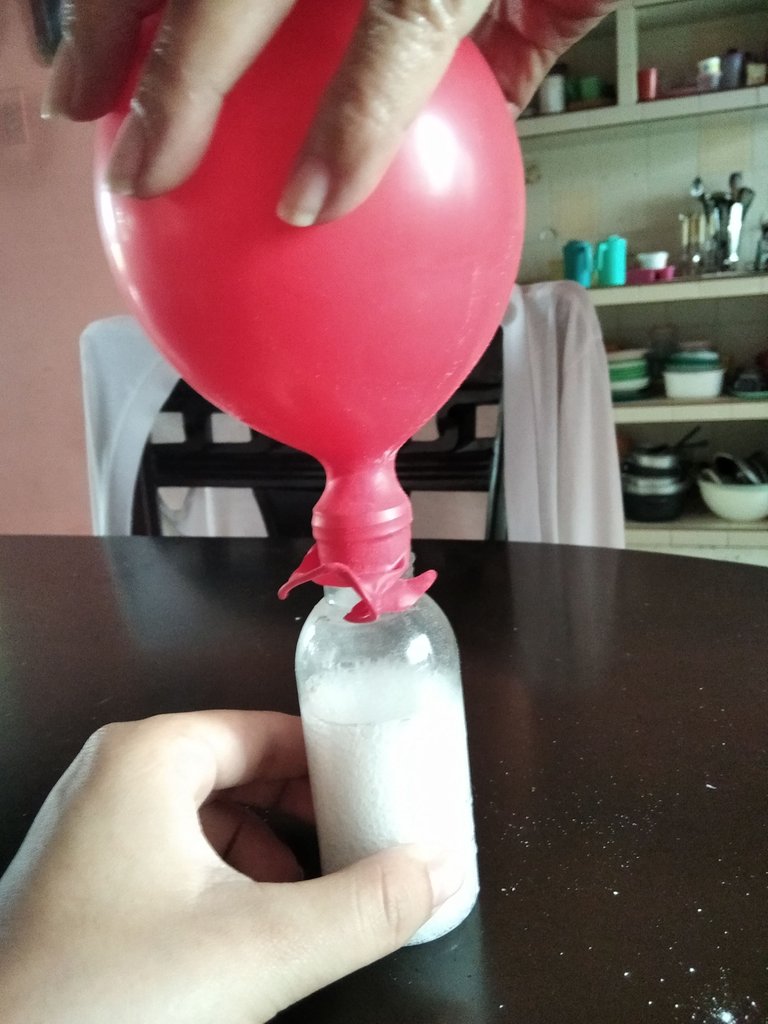[ESP-ENG] Experimento para niños: El globo que se infla SOLO 🔬 Experiment for children: The balloon that self inflates (CHEMICAL REACTION)
Bienvenidos a mi blog ❤️
Welcome to my blog ❤️
A todos nos ha pasado que queremos explicarle a un niño algo pero hacerlo con palabras se hace un poco complicado que lo entiendan, es mejor con experimentos.
Me gusta mucho la ciencia y desde pequeña amaba hacer experimentos como estos y ahora que estoy grande y me formé profesionalmente con una carrera referente a las ciencias, se me hace complicado explicarle a un niño de forma sencilla porqué suceden algunas cosas.
Así que hoy quiero compartir con ustedes un experimento muy fácil que pueden hacer con sus hijo y así irlos enamorando de las ciencias. En este caso es un experimento de una reacción química.
It has happened to all of us that we want to explain something to a child but doing it with words makes it a bit difficult for them to understand it, it is better with experiments.
I really like science and since I was little I loved doing experiments like these and now that I am grown up and trained professionally with a career related to science, it is difficult for me to explain to a child in a simple way why some things happen.
So today I want to share with you a very easy experiment that you can do with your children and thus make them fall in love with science. In this case it is an experiment of a chemical reaction.
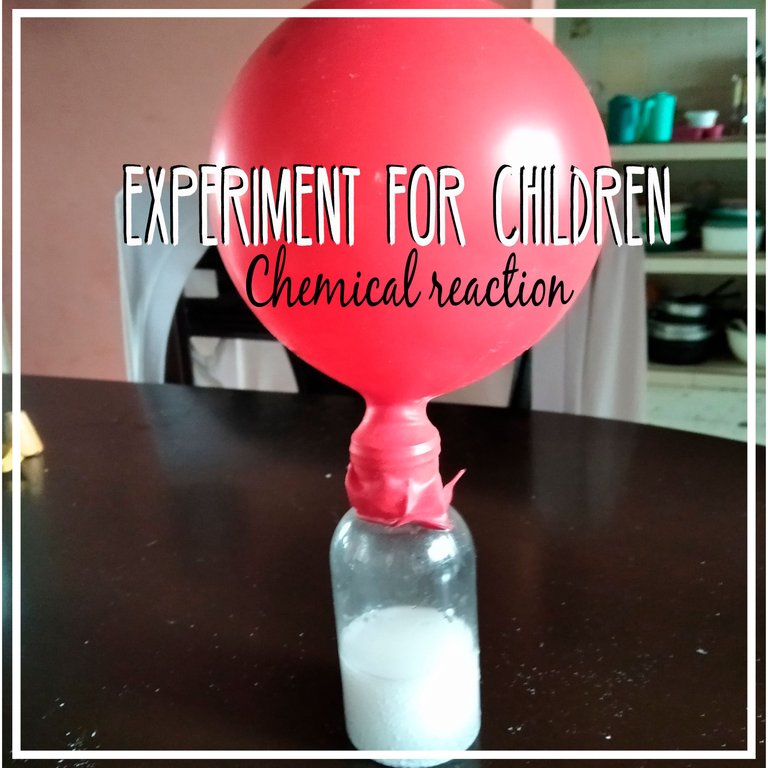
| ¿Qué necesitaremos? | What will we need? |
|---|---|
| 3 cucharadas de Bicarbonato de sodio | 3 tablespoon of baking soda |
| 1 taza de Vinagre | 1 cup of vinegar |
| Una botella plástica | A plastic bottle |
| Una cucharilla | 1 teaspoon |
| Un globo | A balloon |
Como ven, son materiales fáciles de conseguir y que generalmente todos tenemos en casa.
As you can see, they are materials that are easy to find and that we generally all have at home.

1-. Tomaremos una botella plástica pequeña y la llenaremos hasta la mitad con vinagre.
1-. We will take a small plastic bottle and fill it halfway with vinegar.

2-. Luego, tomamos el globo y lo llenaremos con 3 cuchacraditas de bicarbonato de soda.
2-. Next, we take the balloon and fill it with 3 teaspoons of baking soda.
3-. Ponemos el globo en la boca de la botella y de un movimiento rápido vertemos el bicarbonato de sodio dentro de la botella sin soltar el globo.
3-. We put the balloon in the mouth of the bottle and with a quick movement we pour the baking soda into the bottle without releasing the balloon.
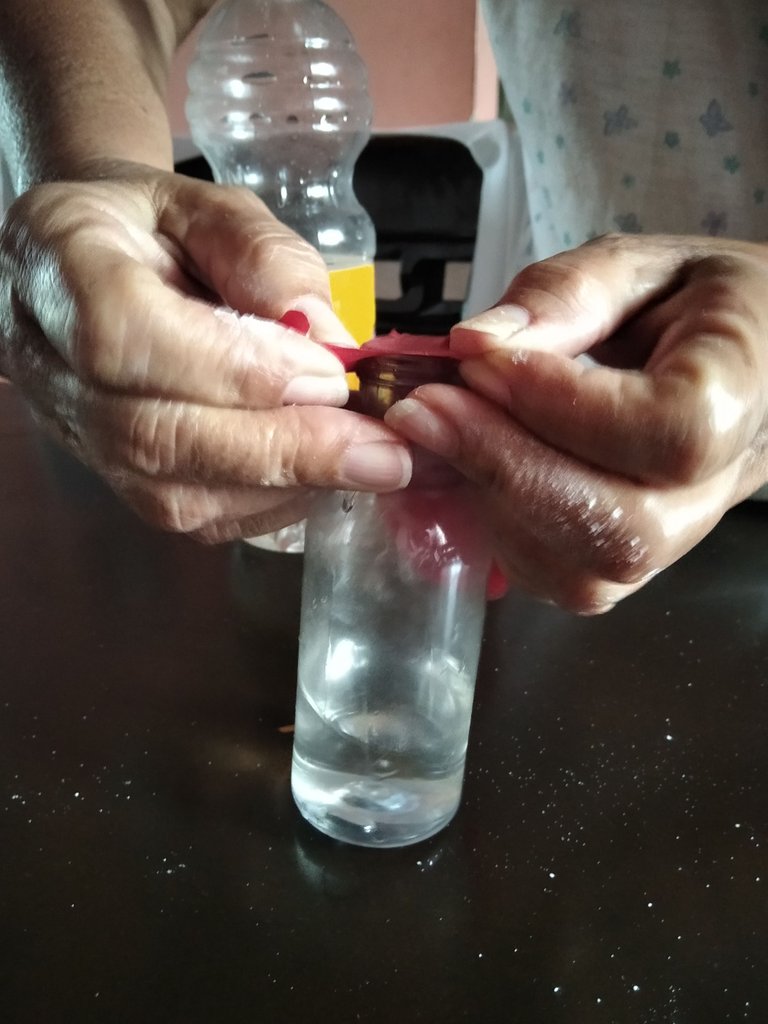
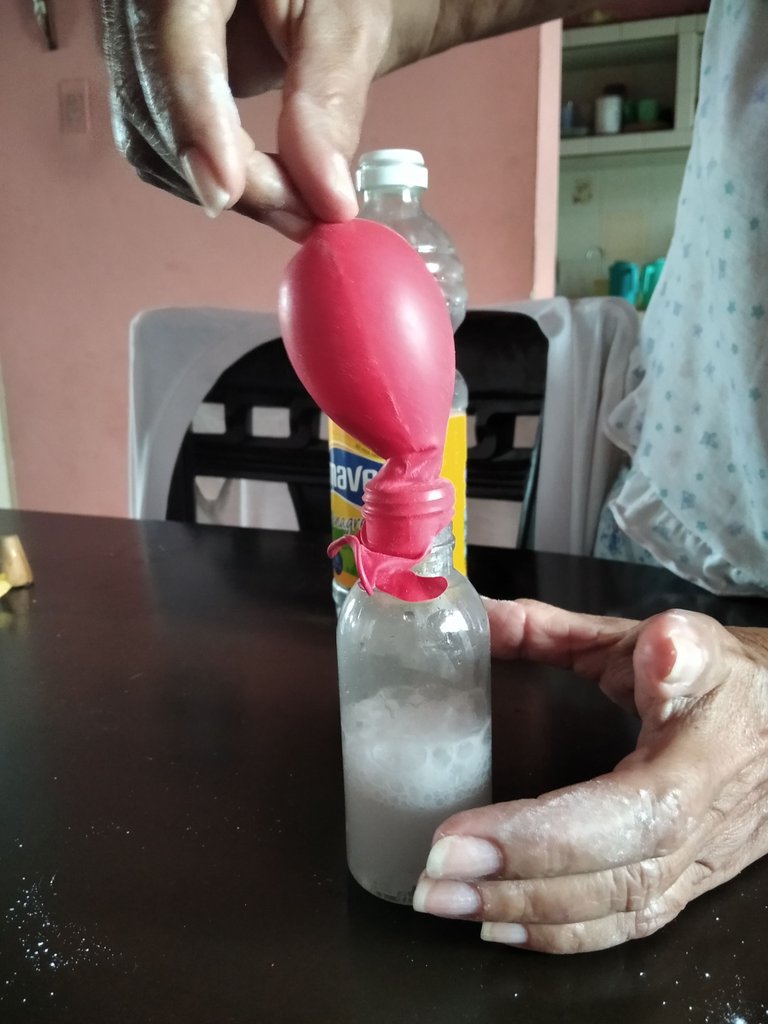
Enseguida veremos como el globo se infla “solo”.
Next we will see how the balloon inflates "by itself".
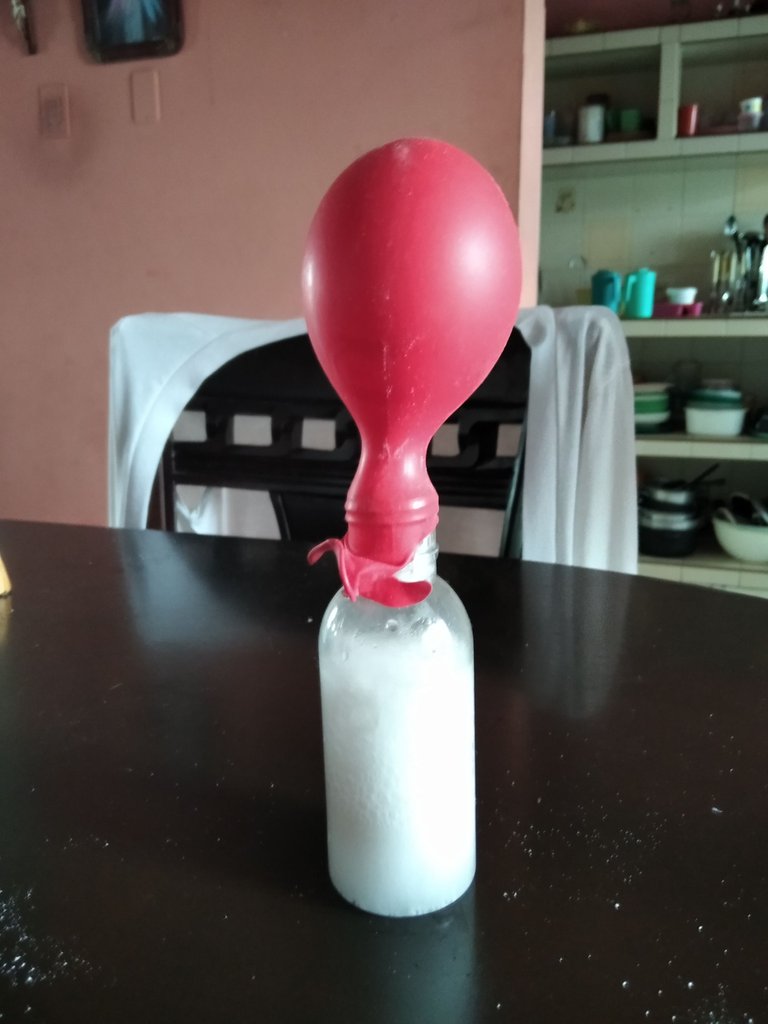
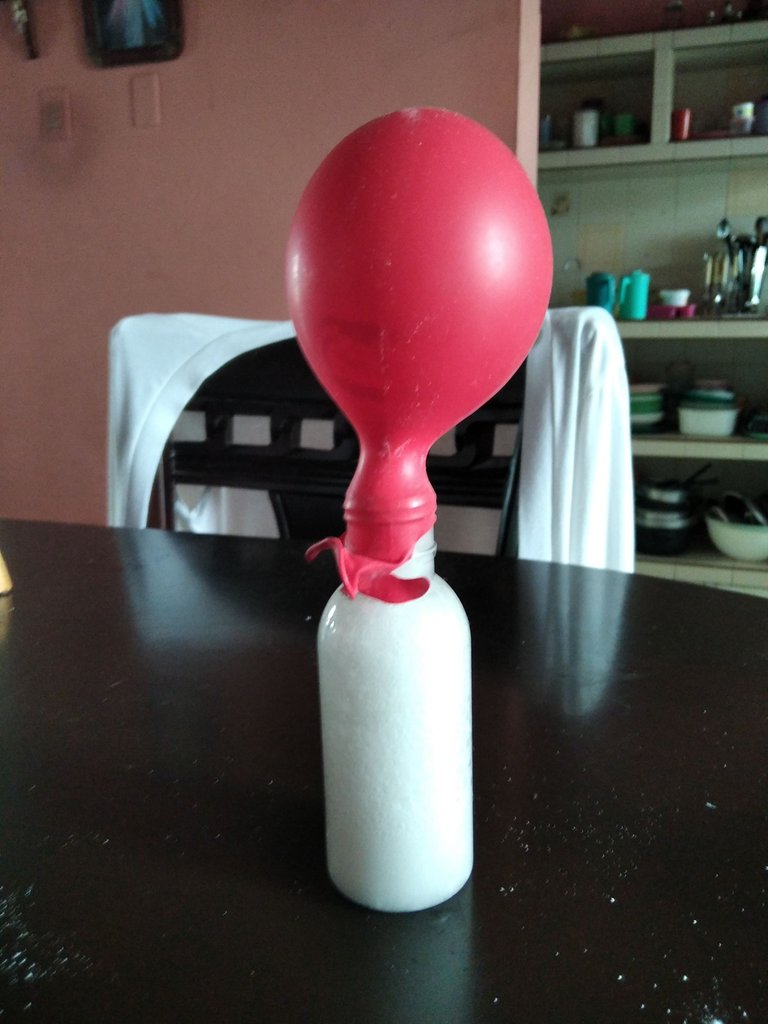
EXPLICACIÓN
EXPLANATION
Cuando mezclamos un ácido, que es el vinagre con una base, que es el bicarbonato de sodio, estos reaccionan y se transforman en agua, una sal llamada: acetato de sodio y el gas que ha inflado el globo, este gas se llama: dióxido de carbono.
Cuando dejan de producirse burbujas en la botella, la reacción química ha terminado y el globo no se inflará más. Las reacciones químicas terminan cuando se consumen los reactivos.
When we mix an acid, which is vinegar with a base, which is sodium bicarbonate, these react and transform into water, a salt called: sodium acetate and the gas that has inflated the balloon, this gas is called: carbon dioxide.
When bubbles no longer appear in the bottle, the chemical reaction is over and the balloon will no longer inflate. Chemical reactions end when reagents are consumed.
